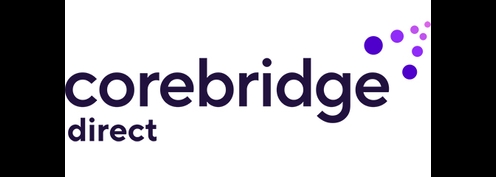- Fully digital experience.
- Mobile app offers additional financial planning tools.
Best Term Life Insurance for 2024


Our evaluations and opinions are not influenced by our advertising relationships, but we may earn a commission from our partners’ links. This content is created by TIME Stamped, under TIME’s direction and produced in accordance with TIME’s editorial guidelines and overseen by TIME’s editorial staff. Learn more about it.
Life insurance is one of the pillars of financial planning. It’s essential for the head of a household or anyone who has people depending on them for their financial needs. Term life is the most common and simplest type of coverage.
There are many term life insurance providers in the U.S., so this review is not intended to be comprehensive. By providing profiles of both leading insurance brands and lesser-known upstarts, we aim to highlight a cross section of the choices you have when you shop for coverage.
| Company | Best for | Minimum available coverage | A.M. Best rating | Trustpilot score | J.D. Power 2023 ranking |
|---|---|---|---|---|---|
Fabric by Gerber Life | Young families | $100,000 | A+(2) | 4.8 | N/A |
Ethos Life | Minimum coverage | $20,000 | A+(1) | 4.7 | N/A |
Flexible terms | $100,000 | A | 3.2 | 19 | |
Everyday Life | Policy choices | $5,000 | Varies | 4.4 | N/A |
Coverage flexibility | $100,000 | Varies | 4.8 | N/A | |
New York Life | Convertible policies | N/A | A++ | 2.4 | 8 |
Northwestern Mutual | Financial planning services | N/A | A++ | N/A | 10 |
State Farm | Customer satisfaction | $50,000 | A++ | 2.8 | 1 |
USAA | Military families | $100,000 | A++ | 1.3 | N/A |
(1) Policies underwritten by Legal and General America Insurance Company
(2) Policies underwritten by Western and Southern Insurance Company
(3) Policies underwritten by MassMutual
(4) Policies underwritten by Allianz
Fabric by Gerber Life offers a fully digital insurance experience: The application and policy access are only available online or through the company’s app. The app offers additional financial-planning tools, including those to create a will or set up college savings for your children. This makes it an intriguing choice for young families with broader financial planning needs.
Most term life insurance applicants don’t need to submit to a medical exam, thanks to Fabric’s automated underwriting system. Coverage terms are 10 to 30 years, in amounts ranging from $100,000 to $5 million.
We noticed that the company offers a live chat option for customer service. It also offers a phone number, but that number goes straight to voicemail and instructs you to leave a message.
Ethos Life offers term life insurance with 10-, 15-, 20-, and 30-year terms, in coverage amounts ranging from $20,000 to $2 million. It’s a good option for those with minimal insurance needs.
Ethos provides quotes online, including simplified issue coverage that typically does not require a medical exam. Those aged 20 to 65 are eligible for coverage (those aged 66 to 85 can get whole life insurance). The company also offers a 30-day money-back guarantee.
Ethos Life policies are underwritten by companies such as Legal and General America, which has an A+ rating from A.M. Best.

Corebridge Direct is a part of one of the world’s largest insurance companies, providing various types of coverage to millions of people. It offers term life policies with options ranging from 10 to 30 years. Those terms are offered in five-year increments, providing flexibility in how long your policy stays in force. The eligible age range is 20 to 80 years old. Available policies range from $100,000 to $2 million of coverage.
Note that AIG ranked number 19 out of 22 companies in the J.D. Power 2023 U.S. Individual Life Insurance Study. Its 762 points was well below the study’s average score.
Most of the providers in this review are insurance companies that underwrite their own policies. Everyday Life is actually an online broker, so it doesn’t underwrite policies; instead, it offers term life policies from insurance companies that do. These include Fidelity Life (an A.M. Best A- rated company), Legal and General America (an A.M. Best A+ rated company), SBLI (an A.M. Best A+ rated company), and others.
The bottom line is that Everyday Life gives you a choice, providing online tools and recommendations to help match you with the policy and coverage you need. Perusing the available policies, you’ll see term life coverage levels ranging from $5,000 to $2 million, for applicants up to age 75. No-medical-exam policies are available as well.

Ladder Life offers term life insurance policies from 10 to 30 years, with coverage amounts ranging from $100,000 to $8 million. The eligible age range for an application is 20 to 60 years.
Like some of the other companies in our review, Ladder offers a largely digital experience and no medical exam for policies up to $3 million, just health questions are asked. What sets Ladder apart, however, is its flexible coverage levels. In other words, if you decide in the future that you need less coverage, you can do so with a click of a button online. If you decide later that you need more coverage, you can apply for more as well. The company claims it offers the only term life policy in the industry with this feature.

Founded in 1845, New York Life is one of the country’s oldest and largest insurance companies. It offers a variety of policy types, including term life up to 20 years. We could not find a coverage amount range on the company website, and the company offers quotes only through its network of agents.
New York Life term policies are convertible, meaning they can be converted into permanent life policies, such as whole life. This gives you flexibility as you get older and your needs change.

Northwestern Mutual is the country’s largest life insurer, according to the National Association of Insurance Commissioners (NAIC). The company sells term life policies with terms of 10 or 20 years or until you turn 80. You can convert a policy into a whole life one as your needs change. The company does not appear to state available coverage levels for term life. For that information you’ll need to talk to a Northwestern Mutual agent.
Northwestern could be a great choice if you have advanced financial planning needs. The company offers not only term and permanent life insurance but also disability insurance, long-term care insurance, annuities, investment brokerage and advisory services, private wealth management services, and estate planning.

Many people recognize State Farm as one of the country’s largest insurers of automobiles and homes. The company also happens to be one of the largest life insurance companies, according to the NAIC.
State Farm offers term life policies for 10, 20, or 30 years. A 10-year policy is available for applicants up to age 75. Coverage amounts start at $100,000 (the company does not state a maximum coverage amount).
State Farm came out on top of the J.D. Power 2023 U.S. Individual Life Insurance Study. Its number one ranking beat out 21 other competitors in this influential study of the industry.

USAA offers two term life policies. Its Essential Term plan is available for those age 21 to 35, with no medical exam and $100,000 of coverage. The term ends on the policyholder’s 39th birthday. The company’s Level Term plan is available for those aged 18 to 70, with available terms of 10 to 30 years and coverage amounts ranging from $100,000 to $10 million. Level Term does require a medical exam.
A USAA Level Term policy includes features tailor-made for members of the U.S. military. These include expedited coverage for deployments, coverage during wartime, severe injury benefits, and guaranteed replacement of the Servicemembers Group Life Insurance (SGLI) upon separation or retirement.
Here's one more thing to note. Unlike USAA auto or homeowner’s insurance, which is available only to USAA members, USAA life insurance is available to any U.S. citizen or permanent resident.
We gathered information on a number of life insurance companies, from some of the country’s largest to lesser-known brands that sell directly to consumers, relying on company websites for detailed information about coverage levels and eligibility. We used third-party ratings and rankings, such as A.M. Best’s Financial Strength Ratings and the J.D. Power 2023 U.S. Individual Life Insurance Study, to complete our analysis. We also looked at companies’ Trustpilot scores (accessed Nov. 28, 2023). Finally, we determined our “best for” designees based on each company’s strengths.
When shopping for a life insurance policy and evaluating companies, consider the following:
It would be a shame to buy a policy and pay its premium for several years only for the company to fail financially and not be there when your family needs it. A history of financial stability gives you confidence that a company will be able to pay your claim. Check the company’s A.M. Best rating to get an idea of its ability to meet that obligation.
You want to buy from a company that provides responsive service and has a reputation for customer satisfaction. Sites such as Trustpilot offer consumer reviews. You can also get an idea of a company’s reputation from J.D. Power’s annual study of the life insurance industry.
There are multiple types of life insurance, including term, whole, universal, variable universal, and indexed universal. Not all companies offer all types, however. You may need to check with several companies to find a policy type and coverage details that work for you.
Life insurance can be a complex product to understand and purchase. This is especially true for permanent life insurance with a cash value component. Consider contacting an independent insurance agent for help. Independent agents represent multiple insurance companies and can help you find the best combination of coverage and price.
A term life insurance policy provides coverage for a set period: usually 10, 20, or 30 years. If you pass away during that period, your beneficiaries receive a monetary death benefit.
When you buy a term life policy, you make three decisions.
Once the policy goes into effect, the insurance company will charge you an annual premium, which will be based on the term length and death benefit amount along with factors such as your age, health, and occupation.
If you pass away while the policy is in effect, your beneficiaries will receive the death benefit. The money is commonly used to pay off a mortgage or other debts or to provide funding for a child’s education. However, beneficiaries may use it however they see fit.
Life insurance is one of the pillars of financial planning, and you have many choices of companies from which to purchase it. If you’re in the market for term life, make it a point to review policy offerings from multiple companies to be sure you get the coverage that’s best for you.
The best amount of term life insurance will depend on your family’s needs. To get a rough estimate, use the 10X formula.
So, if you earn $80,000 annually and have two children, your estimate would be as follows:
$80,000 X 10 = $800,000
$100,000 X 2 = $200,000
$800,000 + $200,000 = $1 million
Using the 10X formula, you’d thus want to consider a policy with $1 million of coverage.
Of course, this is only a rough estimate. With all that’s at stake, you should consider discussing your life insurance needs with a financial advisor or an insurance agent.
Term life and whole life insurance are made for people with different financial needs, so it’s difficult to say which is “better.” Term life is simpler and less costly, but it lacks some of the features of whole life.
Whole life costs more, and policies are more complex, but it stays in force until your death. Policies also include a cash value feature that earns interest, which you may be able to access while you’re still living.
Term life insurance lacks some of the features of whole life and other types of permanent life insurance. For example, a term life policy stays in force only for a set amount of time; after the term ends, you no longer have coverage. Term life also does not have a cash value feature.
There’s no set age at which you should stop having life insurance. Understand, however, that needs do change as we get older. By the time most people are in their 60s or 70s, their mortgage is paid off, and their children are independent. That’s a point at which they can consider dropping life insurance altogether or reducing insurance to cover final expenses only.
The information presented here is created by TIME Stamped and overseen by TIME editorial staff. To learn more, see our About Us page.



